| We twined the band of T-shirts we made in the morning with other two bands we had prepared beforehand using many T-shirts donated by the community into a konawa, or a small rope. The process of twining a nawa consists of two movements: twisting each band clockwise, and rotating the three bands counterclockwise. |
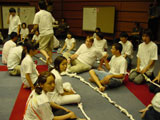 |
These two movements in different directions support each other, holding the three bands together very tightly when they become one nawa at one end. |
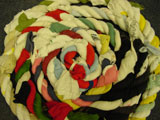 |
| We used two methods of rotating the bands. In the first method, everyone sat down on both sides of the bands, and kept handing the bands to the person sitting across from him or her. In the second method, everyone stood up and moved with a band. This meant that everyone had to keep moving with one band, jumping or crawling under the other bands. |
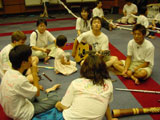 |
All the movements were very simple because they are all connected through the bands, but the twining went smoothly only when it was well orchestrated. |
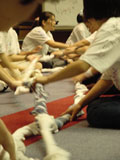 |
| When people started feeling the movements of the people around them, a natural rhythm was created, first locally but through the bands. Many local rhythms were gradually harmonized with each other. |
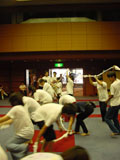 |
Whenever someone got confused, the bands got entangled and the whole process had to stop for a moment to undo the tangled-up part. |
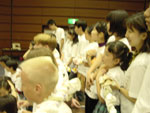 |
| The standing method, in particular, required concentrating on how other people were moving so that no one got trapped or entangled. Nevertheless, we continued working as we shouted "Na, Wa," for each turning of the bands. Inch by inch, the nawa grew longer. |
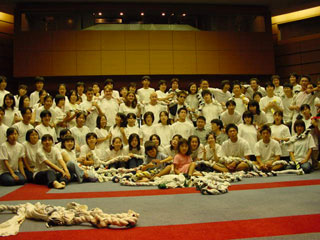 |